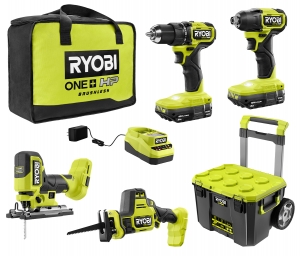What Causes Those Ugly White Marks on Tabletops?

Getting Rid of White Rings
Yesterday, I received an email from one of our newsletter subscribers asking how to get rid of ugly white marks and rings on table tops. A quick internet search did yield quite a bit of advice -- some good, some bad and some contradictory. As a former antique furniture restorer, I thought I’d try sorting out fact from fiction by adding my own two cents worth.
Water is the Villain
White rings and marks on furniture are caused by water or water vapor coming into prolonged contact with the finish. Dark (brown or black) marks are the result of water penetrating the finish and staining the wood below.
The Problem is Usually Skin Deep
Most of the time, white rings are very close to the top surface and there are two basic methods for getting rid of them: (1) by applying gentle heat or (2) by removing the top layer of finish using an abrasive material such as a rubbing compound, pumice, toothpaste, baking soda, cigarette ashes or salt often mixed with a lubricant like cooking oil, Vaseline, mayonnaise, etc. For more stubborn stains, sometimes, a combination of both works best.
Furniture Finishes Have a History
One reason a single method does not work on all white rings is that furniture can have different kinds of finishes; lacquer, varnish, oil, shellac, and polyurethane are the most common. In addition, most furniture has had a variety of toppings applied such as spray polishes, oil, and wax. For most of us, it’s difficult to figure out exactly what the finish is and what may have been applied to it. That means a bit of trial and error may be necessary to find the best solution.
A Couple of Cautions
- Applying one of the abrasive materials to a furniture finish can, and usually will, alter the sheen or degree of shininess. Abrasives can leave a dull spot on a high gloss finish or a shiny spot on a semi-gloss or satin finish. When removing white marks from a table top, it’s sometimes necessary to rub out the entire surface to restore a uniform sheen.
- Too much heat can soften a finish, cause it to bubble or change texture, and lead to discoloration from scorching. Begin with low to moderate heat settings and increase them gradually.
In my next blog, with these caveats in mind, I offer up five different methods for getting the white out. Many use implements and materials commonly found around the house.
Recommended Articles

The How’s and Why’s of Upgrading a Central AC System
A step-by-step video demonstration showing removal and replacement of a central air conditioning system. Includes advantages of new, state-of the-art AC systems.

If You’ve Got a Project That Involves Demolition, You’ll Want to Know About This Tool.
I try out a new tool designed and engineered to do one task exceptionally well -- demolition.
